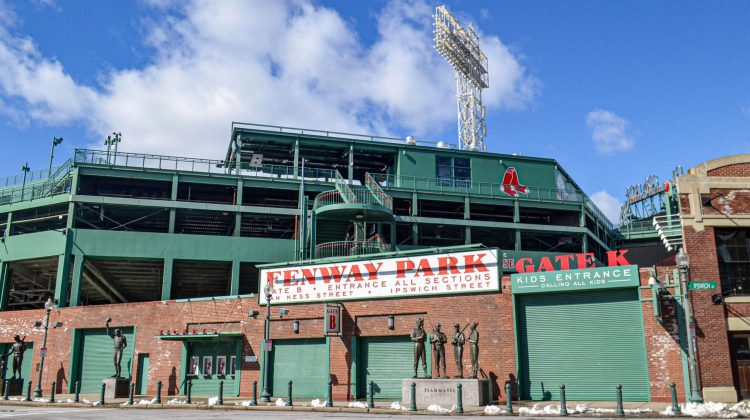Did you ever wonder why there’s such a symbiotic relationship between the Boston Marathon and the Red Sox?
So have I. The two endeavors (I hesitate to compare them as sports) have nothing in common. Over here, we have finely-tuned runners who torture themselves all winter so they can survive a 26-plus-mile jaunt in and around Boston. And over there, we have… ballplayers – perhaps the worst representatives of the word “athlete” of them all.
After all, it was the rotund John Kruk, a former Philadelphia Phillies slugger, who answered a woman critical of his beer-drinking by saying “I ain’t an athlete, lady. I’m a ballplayer.”
Until the 1970s, you’d run those 26 miles in all kinds of weather and get a bowl of beef stew for your troubles. Not that I have anything against beef stew. It sort of reminds me of the line in “Caddyshack” when a riffing Rodney Dangerfield says “you buy a hat like that, I bet you get a free bowl of soup.”
Meanwhile, over at Fenway, these guys play nine innings (sometimes more) and they sit down to a catered meal afterward. This hardly seems fair.
Yet here they are – sharing the glory on Marathon Monday as if they were grilled cheese and tomato soup. The marathon is a day-long civic celebration that, in most years, is the real first day of spring. It starts in the morning, goes on all day, and doesn’t really end until it’s nearly dark.
It’s one of the few athletic events where the winners are unknown to almost 100 percent of the fans who come out to cheer them on — those who mostly show up to lend support to the back-of-the-packers who are running for various charities.
Sixty-five years ago, somebody thought it would be a great idea if we snuck a Red Sox game into this mix. Sure. Start it at 11 in the morning so that the game will let out when the maximum number of runners (and their fans) are streaming through Kenmore Square.
I don’t know who came up with the marketing campaign, but I love it. “Come to the Red Sox game,” the spiel begins. “And when the game is over, you can mosey on down to Copley Square and see the runners cross the finish line.”
Oh?
Try it. I dare you. Nobody’s moseying anywhere. You need all the skills of a broken-field runner and a bruising fullback to get anywhere.
I did this so you wouldn’t have to. I got about a block away from Fenway and just gave up — except that I was stuck in this sea of people heading straight to… I really don’t know where I was headed. All I know is that I was going in the wrong direction for the subway. When I finally bulled my way to the Kenmore Square station, it was sardine city and I dropped my token on the ground. Some grubby little kid dove into the wall of people and swiped it (thankfully, his mother intervened and made him give it back to me).
While I’ve always been a Red Sox fan, I neither understood, nor appreciated, the allure of the marathon until I saw Boston Billy Rodgers win it in 1975 (that’s right, 50 years ago. I am old). Even though Boston Billy made history that day, the marathon was still a quaint little civic event.
However, it wasn’t long before that changed. Rodgers was one of the prime movers in making it change, too. He was among those advocating for prize money and other perks. Soon, the race was on its way to being what it is today. And that’s fine. If you punish yourself that much, the least they can do is give you a few bucks for your efforts.
Events solidified this symbiotic relationship 12 years ago when Thing 1 and Thing 2 set off bombs at the finish line of the marathon. Until then, it had been a great day (even if it was the only race I ever missed as sports editor). Mike Napoli had knocked in the winning run and the Red Sox beat the Tampa Bay Fay Wrays.
The Sox players, perhaps aware of this strange coupling of sports, took up the banner and rode the emotion to a World Series championship. “Boston Strong” became the mantra of the summer. David Ortiz said the F-word in front of 35,000 people and it was deemed OK!
Wherever you choose to go Monday, have a great day.

